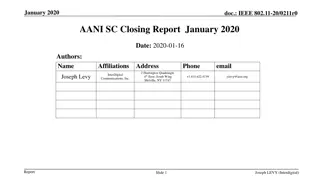
Exploring Kinematics and Kinetics of Rigid Bodies in Engineering
Delve into the world of plane motion, rotation, and slider-crank mechanisms in rigid body kinematics and kinetics. Understand linear and angular displacements, velocities, and accelerations of bodies in motion. Learn how to analyze the movement of points along straight or curved paths for engineering applications.
Download Presentation

Please find below an Image/Link to download the presentation.
The content on the website is provided AS IS for your information and personal use only. It may not be sold, licensed, or shared on other websites without obtaining consent from the author. If you encounter any issues during the download, it is possible that the publisher has removed the file from their server.
You are allowed to download the files provided on this website for personal or commercial use, subject to the condition that they are used lawfully. All files are the property of their respective owners.
The content on the website is provided AS IS for your information and personal use only. It may not be sold, licensed, or shared on other websites without obtaining consent from the author.
E N D
Presentation Transcript
Plane Kinematics and kinetics of Rigid Bodies Kinematics of Rigid Bodies kinetics of Rigid Bodies
Introduction Introduction In Chapter 2 on particle kinematics, we developed the relationships governing the displacement, velocity, and acceleration of points as they moved along straight or curved paths. In rigid-body kinematics we use these same relationships but must also account for the rotational motion of the body. Thus rigid-body kinematics involves both linear and angular displacements, velocities, and accelerations.
The general plane motion of a rigid body A rigid body executes plane motion when all parts of the body move in parallel planes. For convenience, we generally consider the plane of motion to be the plane which contains the mass center, and we treat the body as a thin slab whose motion is confined to the plane of the slab. This idealization adequately describes a very large category of rigid body motions encountered in engineering. The plane motion of a rigid body may be divided into several categories, as represented in Fig.
: ? = ?????. Case Case 2 2 :



















